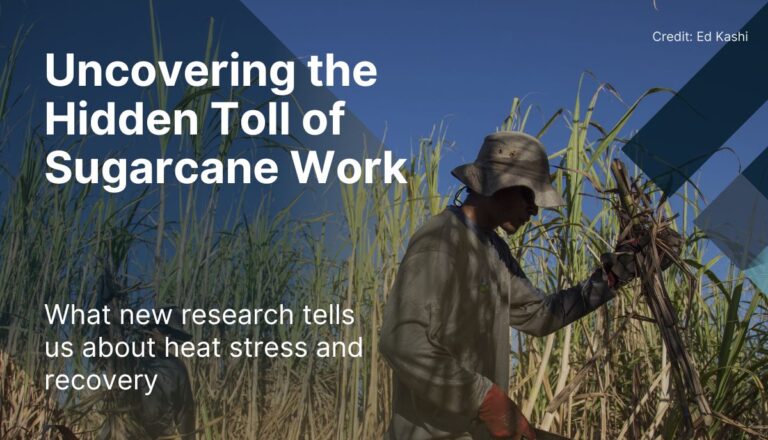We walked around for two hours in the dust, in the staggering heat, amongst a throng of other people all walking the same creeping pace. “It feels like being in a zombie movie,” I remember thinking to myself. But everyone was there willingly, to pay their last respects to a treasured community leader, father, husband, and friend.
The day started out at the family home. We were welcomed with open arms. There was a quiet peacefulness, like the one that precedes any large family party. The widow chatted for awhile, poured water over the grounds around the house to settle the dust – taming the dry dust is an ongoing battle in every household here during the zafra (harvest season). Then she went to go change and get herself ready for the other guests. It was only when her husband’s coffin was carried out of the house and lifted into the bed of the pickup truck that she began wailing, final admitting that even after a month of preparing for his death, she still was not ready to let him go.
As part of the funeral procession, we ambled at a slow pace through the streets of Chichigalpa – a small city in the heart of Nicaragua’s rum and sugar country. We walked up and down street after street in a zigzag pattern. Many of the streets are one-way, so we were limited to the direction the truck carrying the coffin could turn. It was so hot, with the sun beating down, that women with buckets of cold ice water would follow the procession selling soda pop and packets of water, which they kept cold inside the buckets. Water here often comes in small, sealed, single-serving plastic packets, where you chew one corner off and suck the water out leaving behind only a useless, shriveled plastic membrane. It’s the first time in my life I’ve ever attended a funeral where it seemed like the emotional pain of the family was converted into actual physical pain that I was experiencing. And even then, the physical pain didn’t even come close to comparable, I’m sure.
He was a former guerrilla commando, a community leader, a cane worker, a provider, and a very good man with a very lovely family. By all accounts, he was a local legend. But in the course of one short month, he lost his vibrancy, his capacity to walk, and even the ability to communicate with those he loved most. That’s how this disease works – even after diagnosis, a person can walk around for months, even years, seemingly normal. Then there’s an odd ache here, a pain there, a quick trip to the doctor for something minor that ends up lasting for days. Some end up on in-home kidney dialysis, where the dusty conditions can make preventing infections nearly impossible. Eventually, the systems in the body start shutting down one by one. This disease is a ticking time bomb inside the body that can go off at any time. In the end, all that’s left is immeasurable pain while you wait for death.
In a way, he was lucky: he lived beyond his 30’s. Just last month his first cousin and neighbor passed away from the disease at about 32 years old. The population here is only around 46,000, and yet this city has enough business to support several coffin shops. This weekend alone, there were three other funerals. Each one of the deceased had kidney disease.
We finally made it to the cemetery, where the people in the procession filtered into the crowded graveyard, walking between the graves, over concrete tombs, and when necessary over burial mounds. I sat perched on someone’s concrete tomb for the next hour and a half while the deceased’s son dug his father’s grave along with some other men in the community. The son has CKDnT as well, and it’s end-stage. He may have gotten the impression he was digging his own grave perhaps, who knows. What we do know is that here, where kidney transplants and hygienic dialysis treatments are unheard of, a diagnosis of CKDnT is, essentially, a death sentence.
Later that week, about five days later, I would find myself at the kids club run by La Isla Foundation at the elementary school in a nearby community. That day, we would hold computer classes – courtesy of two small out-of-date laptops and a copy of some free typing software for children. A line of kids wanting to take part in the classes would show up, but only a handful would get a slot for one of the classes. Right now, our capacity only allows classes of 4-6 kids at a time (2-3 kids per computer) for 30-45 minutes each. The others have to wait. We start with the girls, and go over the basics of starting the computer, opening and closing a window, how to open a Word document, how to save changes, etc.
At the end of the class, two older girls want to keep practicing typing. One of the volunteers happened to bring her laptop, so I use it to teach the two older girls the basics of two-hand typing. For an hour and a half, they labor to properly type the contents of a nearby children’s book about snow, a substance they have never seen and may never see in their entire lives. Their typing, like the funeral procession, is painfully slow. But they labor on, each taking their turn because they know learning to type with two hands will give them more options in the future. Computer classes, English classes, skill training classes – we try to provide these services in order to give these kids options. In a week where the neighboring communities have seen so many funeral processions for former cane cutters, many at terrifyingly young ages, these kids already know that alternative employment options can mean everything.
The oddest thing about attending the funeral was that, aside from the widow, no one else was crying. And it wasn’t because this man wasn’t loved, because he was, dearly. I took it to mean that death is far too commonplace here, something that the residents have become too used to. When everyone around is dying of the same disease, it almost seems a foregone conclusion that you might too. This is the mindset La Isla Foundation is trying to change. LIF wants to not just to find the cause of CKDnT, but also to show our friends in neighboring communities that dying like this, young and in unbearable pain, is not “normal” or inevitable.
-Purvi Patel, Human Rights Research & Advocacy Intern







